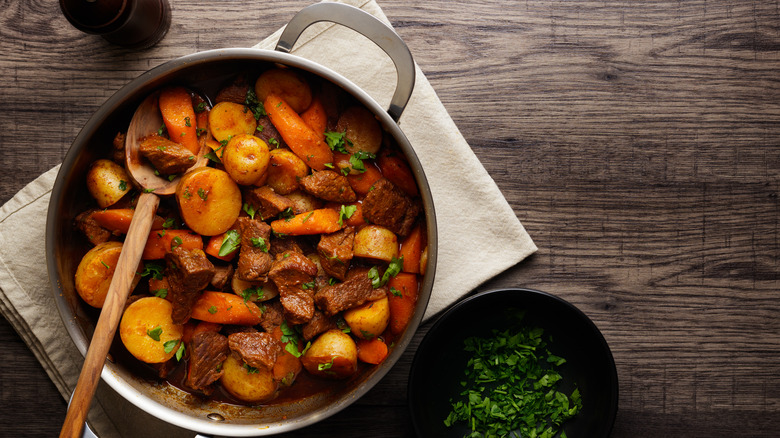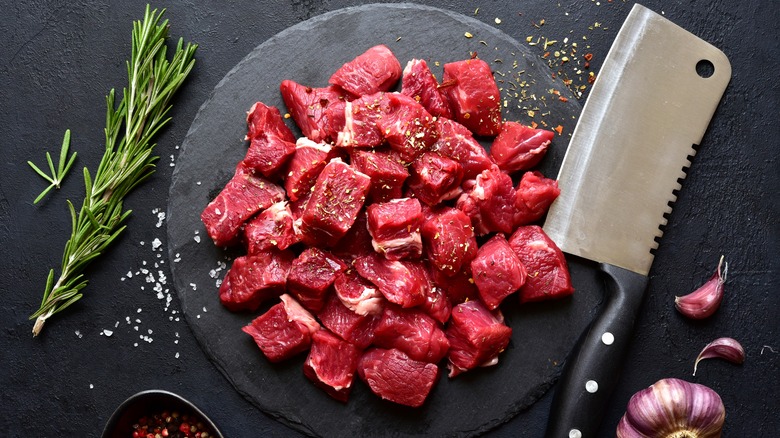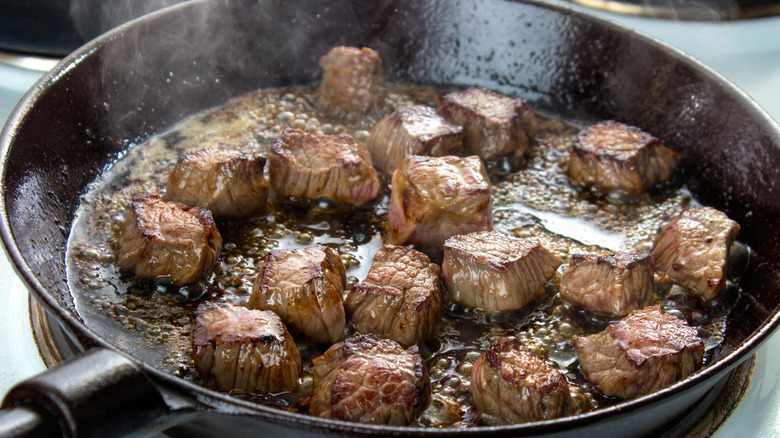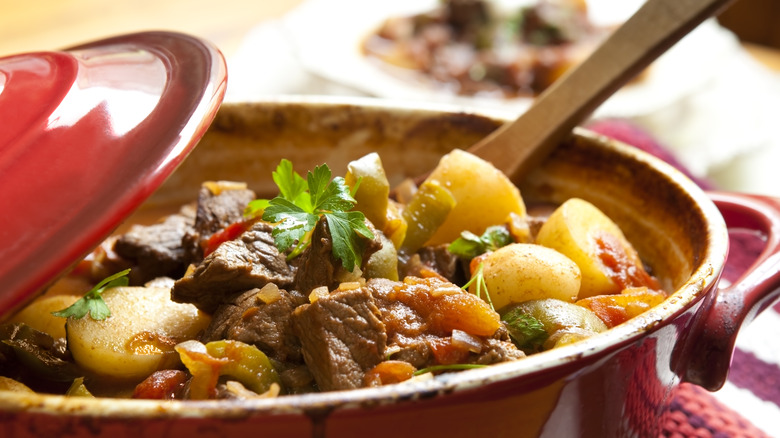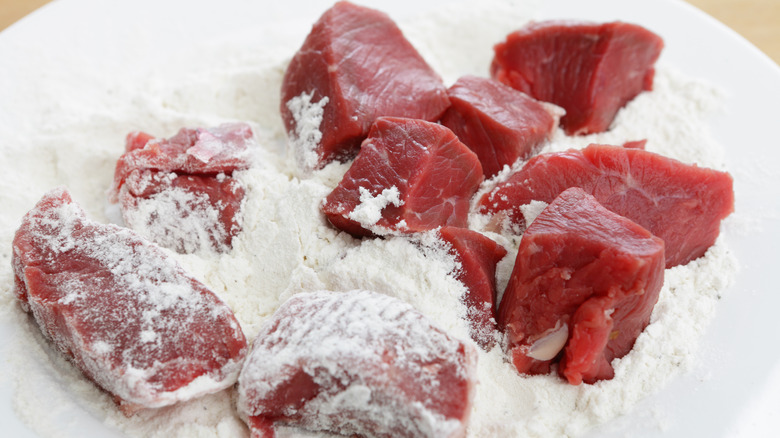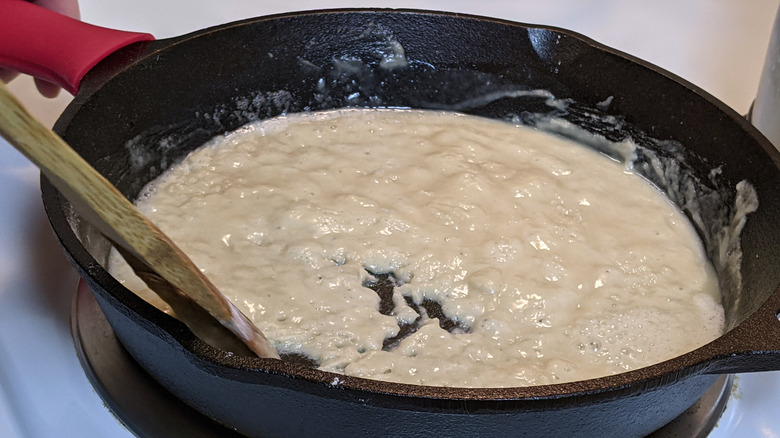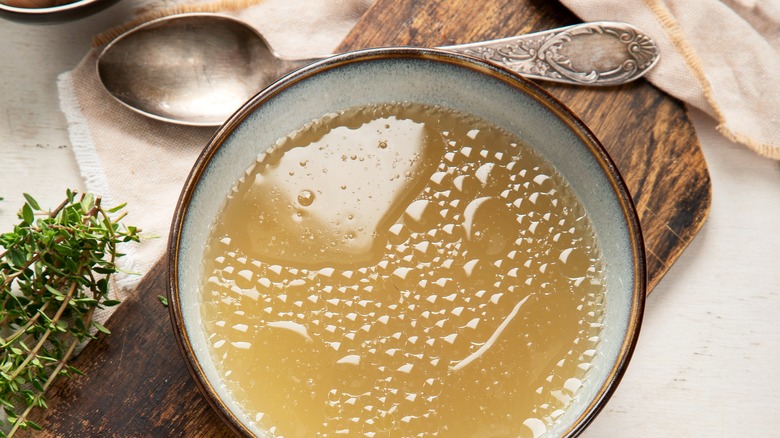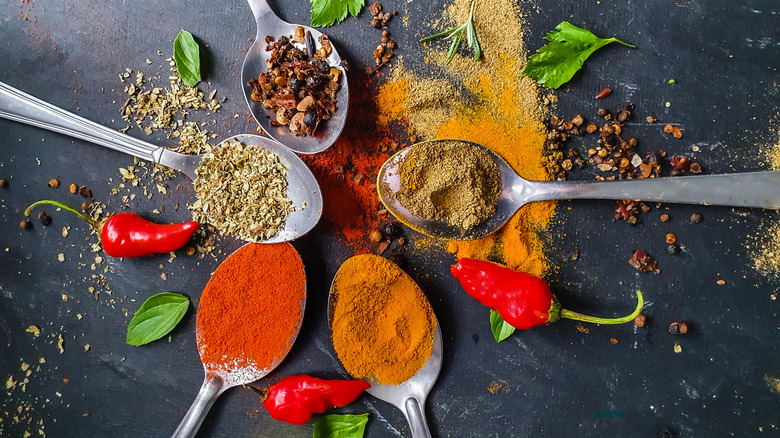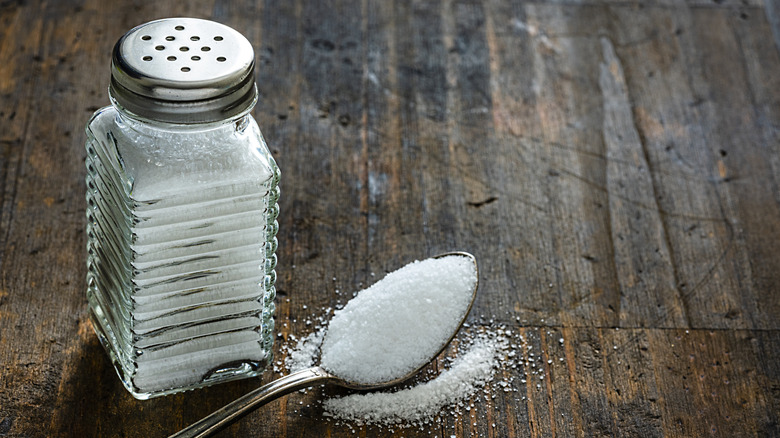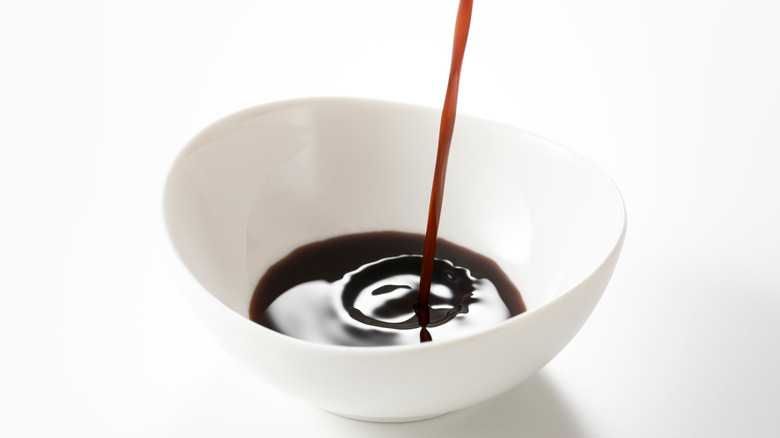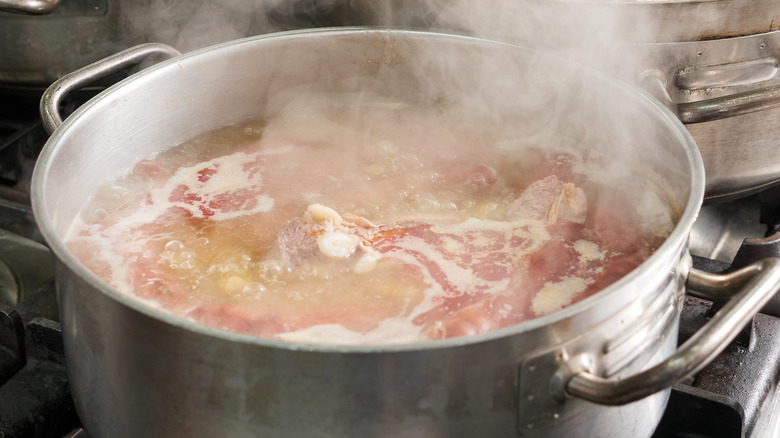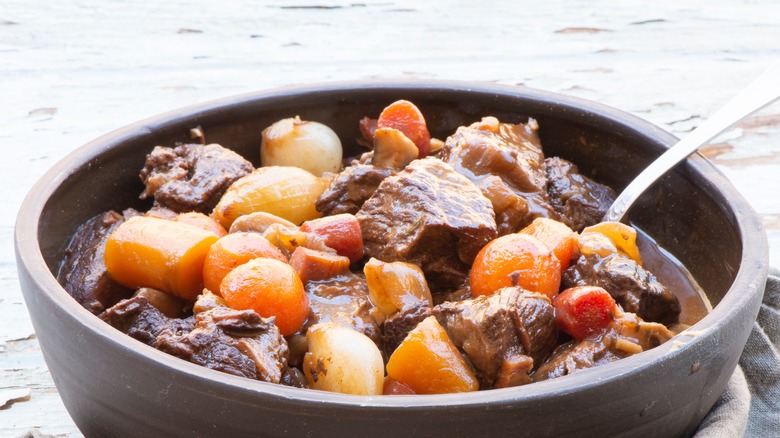Avoid These Common Mistakes When Making Beef Stew
Beef stew is one of those homemade foods we've cooked so often that we barely give it a second thought. It is simple enough at first glance — just cut the ingredients up, put them into the pot with some water, and have it simmer until everything is tender.
But when it comes to beef stew, there are a lot of little details that can improve or worsen the taste. The exact cut of the beef, whether you sear it or not, when you add your vegetables or the spices you use — all of this and more play a part. If you are not paying attention, your stew can come out a disappointment: dry meat, bland broth, veggies that become all mushy and soft.
Fortunately, fixing these mistakes is easy enough. Take the tips we introduce in this article — like choosing the most fitting cut of beef, searing that cut before braising, and adding your veggies at the end when the meat is almost cooked — to make your homemade beef stew the best it can be.
Using the wrong cut of meat
The tender filet mignon, marbled ribeye steak, or what is called a "stew meat" in supermarkets should not be your first choice when shopping for a stew. Neither of them will benefit from slow cooking — fillet mignon is too lean and tender, and ribeye steak would quickly lose its luxurious fat and become dry and shriveled. Instead, consider a chuck, a shank, or a beef neck — the first comes from the shoulder of the cattle, the second from the "forearm" (and is full of collagen, which makes it a great choice for dishes that are hearty or come with a sauce or gravy).
The best meat for a beef stew is a tougher cut, with a lot of collagen-rich tissues in it — it will break down over the slow cooking process, leading to chunks of meat that are flavorful and tender. Those cuts of meat are often also cheaper in supermarkets.
Not searing the meat
If you simply put the meat in there and leave it to cook, you will miss out on a lot of flavor. To give your stew a deep savory, meaty flavor, always sear the meat first. Searing is good for building flavor and texture (but not for "locking the juices inside" — that's a myth).
If you use a pan or a metal pot with a thick bottom, you can brown and caramelize the meat right in the pot – similar to how you would pan-sear the steak. Add the oil to the clean, dry pan or pot and heat it over medium-high heat until the oil is hot, but not too hot (if you have a thermometer, 140 F is the maximum). Add the cut cubes of meat and stir it to let it sear on all sides, then take it out. Put in a new fresh batch of meat and sear it, repeat until all the meat is done. You don't want to overcrowd the pan (otherwise it will steam and not brown), so you'd have to do it in batches, depending on your quantity.
If you are using a multi-cooker or something else for your beef stew, it is still worth it to sear the meat beforehand in a pan. You can add the mix of oil and meat juice that formed in the pan during browning into the cooker for additional flavor.
Cooking your veggies for too long
It will take an hour or more for the meat to break down and become ready. Your veggies — potatoes, carrots, and whatever else you added — would turn soft and mushy if you cooked them that long. Instead, add fresh ones about 20 minutes before the cooking ends — once they are ready, the stew is done.
A better way to go about stewing vegetables is to add different ones at different times. The firmer ones like carrots and potatoes should go in earlier and cook for about 20 minutes. The softer ones, like bell peppers, need a very short time to cook so add them when carrots are almost ready.
Things like onions can be added at different times depending on what you want to achieve. You could add them at the beginning together with the meat and have them melt away, giving all their flavor to the stew. Or you could cut them into rings or big chunks and add them together with peppers at the very end, to get clear onion parts and taste in the mix.
You'll also need to give special attention to the frozen veggies — they cook very quickly. Add them at the very end and let them simmer for a minute or two — that's all they really need.
Dusting the meat with flour or cornstarch before browning
Dusting the meat in flour before searing is an ancient cooking technique used in French peasant cookery. Hawksmoor group executive chef Richard Turner told The Guardian that doing so was the simplest way to begin the process and keep the meat's gravy thick. But doing that for a stew comes with three distinct disadvantages.
The first is that the flour gets in the way of the browning. Second, the flour can burn in the oil and generally burns much more quickly than the meat. A burnt taste isn't a good addition to stew — or to anything else for that matter, but it's hard to avoid if you want to brown floured meat thoroughly.
Finally, the third reason has to do with the stew's consistency. No matter how little flour or cornstarch you added before browning, it would contribute to making your stew thicker, which would bring you closer to the next mistake people make — over-thickening.
Over-thickening the stew
Although stew is supposed to be thicker than soup, the liquid part of it shouldn't have the consistency of gravy. It just needs to be thick and glossy enough to cover the back of the spoon. The way to get there, ideally, is by simmering collagen-rich cuts of meat on low heat over a long time.
That said, it is not always possible to go the ideal route. If you feel like your stew is too thin, you can thicken it with a flour slurry, or other thickening agents like amaranth, cornstarch, quick oats, or mashed or pureed potatoes (this is in addition to the potatoes you already cooked in the stew).
Normally, you'd add a thickener of your choice at the end of cooking — all of these only need 2–5 minutes to be ready (except amaranth — this grain needs to be cooked first). As a rule of thumb, 1½ teaspoons of flour is enough to thicken a cup of liquid. This is where it's easy to add too much and end up with a gravy-like stew. So if you decide to add a thickener, add just a bit at first and see how it goes.
You could also thicken your beef stew without additional ingredients — simply using what you already have in the pot. To do that, scoop out a bit of broth with vegetables and blend it into a slurry. Then, add the slurry back into the pot while stirring the mix, and you'll get a thicker stew.
Using water as a base
At its most basic, stew is a dish with meat (or fish, or seafood) and other ingredients in a thickened liquid. This liquid can be water, but your best choice would be beef stock.
The beef stock has a strong umami flavor that mirrors the flavor of the meat itself. Beef broth, fresh or canned, is a good alternative to it. Whether it's a stock or a broth, either of these can add an extra layer of depth to the stew that water just can't match. Even a beef bouillon cube would work better than water, in a pinch.
You aren't limited to the beef types though — there are quite a few other options to explore. If you'd like a lighter flavor, choose a chicken stock or broth. If you want the opposite — to make the flavor even richer — add a beef or mushroom bouillon cube on top of beef stock. And if you are going vegan, a flavorful plant-based vegetable stock or broth will make a perfect base.
Not enough or wrong seasonings
Wrong seasonings — or the right ones but in the wrong quantities — can ruin the stew's flavor. You want to be sure your herbs and spices can stand up to the beef and help create a hearty, rich, and complex taste. The base of the taste comes from vegetables like carrots, onions, celery, and garlic. Then you'd want to add salt, white and black peppers, and, perhaps, red paprika. With this, your stew's foundations are covered. Next, you are going to face the choice between different herbs and their combinations — and all of them make the stew delicious in their own way.
The result we want to achieve is for the flavors to mingle together and enhance the stew — so it's important to choose herbs that go well together. Oregano with thyme, rosemary with thyme, cumin, coriander, and not-so-hot paprika are three popular combinations that work great in a stew. Bay leaves, fennel seeds, oregano, basil, marjoram, parsley, and dill weed are also great, and some of them are awesome as a spice mix.
Then there is soy sauce, Worcestershire sauce, and red wine. Of these three, Worcestershire sauce can replace all of the herbs by itself — although be careful with the combination if you decide to add it in addition to herbs.
Adding salt at the end of cooking
The timing for adding salt matters, because the flavor can change a lot depending on it. Salt your stew early in the cooking — when adding the meat to the pot, and then again when adding sautéed onions (or when adding other vegetables, if you left out the onions).
Salt penetrates vegetables even slower than it does meat. While this process is faster during cooking than it is with cold food, it still takes time. That's why adding salt early on is important — it gives it time to seep into everything evenly and thoroughly and brings out the best and well-rounded flavor. If you add the salt at the end instead, it won't have time to seep through into the vegetables and meat — you'll get salty liquid but bland solid pieces.
It's also important how much salt you put in — it's better to undersalt at first, and then add more if you feel it's not enough as you taste. Remember that soy sauce might also add saltiness and some pre-made spice mixes contain salt, so take it into account if you are using them.
Forgetting to add the acid
Acid can cut through the richness of fatty and heavy dishes, add a zing to savory ones, and enhance the overall flavors of the dish. It might also help if your stew tastes flat or just feels like it's missing something. A bit of acid added at the end of cooking can round all this out and "brighten" the taste.
Tomato paste, wine, pickles, lemon juice, fresh tomatoes, and lemons are good as a source of acid. If nothing else is available, vinegar of any kind can do the job — you only need a bit of it so it will not impact the taste badly. But your choices aren't limited to the usual tomatoes or wine – there are two other ingredients worth trying. If you want to add an extra kick to your stew, try soy sauce or Worcestershire sauce — they are also acidic.
Worcestershire sauce is both a background flavor and a source of umami (this word means "delicious savory taste" in Japanese, and is often used to describe the meaty, savory deliciousness that deepens flavor) and goes very well with beef stew. The soy sauce has rich umami and can act as a binder that brings various flavors of stew together. Plus, dark soy sauce can give it a more striking, deeper color, and add some sweetness too (yes, the acid and sweetness – it has them both). Light soy sauce would work too, but it gives less color and sweetness.
Cooking at too high a temperature
There are many processes and changes the meat goes through while you cook it. These changes (and their results) differ depending on what temperature is used. High heat over 205 F will cause the meat to tighten and toughen. The protein fibers in it become hard, they shorten, and on top of that, the meat loses moisture and becomes dry. This is not what we want to see in a stew.
The low heat does the opposite — it makes the meat tender and soft. This is the reason it's best to use low temperatures (somewhere between 185 F and 205 F, just below the boiling point) when cooking the stew. It's also why you'd want collagen-rich meat cuts like the chuck, a shank, or a beef neck. This combination of the right cuts of meat, low heat, and cooking for a long time gives the stew its signature texture and taste.
Simmering for too long or too little
Cooking duration is one of the most important things when making stew, as well as doing it at the right temperature. Some recipes ask you to cook it for half a day or more, while others (like this lamb and yogurt stew recipe) promise to get it ready in as little as 1 hour.
A rule of thumb for cooking in a pot on a stovetop is that to get a tender beef, you'd want to simmer it for 2.5-3 hours. This time is usually enough to completely cook it no matter the type of cut you used — be it thin slices, 1-inch thick cubes, or full-scale steaks.
It is ready once the meat is tender and falls apart under the fork. That's when you can add frozen veggies and a thickener if you want, and let it cook for 2-5 minutes more. These few minutes are enough for vegetables and things like cornstarch or flour slurry — so once they are done, the stew is done.
Not adding red wine
There are stew variations with red wine in Chinese, Korean, French, American, and other culinary traditions. It does a few things for the stew. First, it's an acid (so if you use wine, adding tomato paste, lemons or vinegar is going to be overkill). Second, you can use it to deglaze the pan after browning the meat. Add the wine to the pan and heat it over medium heat, scrap all the bits and pieces that are left after searing the meat and sautéing the onions off the walls. Then add all of it to the stew.
Third, red wine acts as a seasoning and adds to the flavor. You can even use it as a base for stew together with beef stock. A large glass of wine or half a bottle — depending on how much stew you are making — could give the dish a light fruity fragrance and make the taste soft and sticky.
Dry red wine is the best for this. Pinot Noir, Cabernet Sauvignon, or Merlot are all great choices. Malbec, French Bordeaux, and syrah are also good options. (Most dry red wines would work, so you don't need to worry if you can't find any of those specific ones.) The only thing you'd want to pay attention to is the wine's quality — as a rule of thumb, cook it with something good enough to drink.
